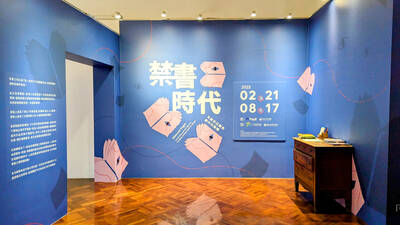Maybe it’s the effect of recession, maybe it’s simply a case of Hollywood fatigue — whatever the reason, buyers and designers at Paris fashion week are declaring the end of the celebrity cult.
Backstage at the shows, the talk was not of glitzy muses such as actress Lindsay Lohan, but of classic accessories, inspiration from the archives and long-lasting pieces to tempt choosy shoppers amid a slight recovery in spending.
“I think we’re moving away from [the star factor], it’s more about the product rather than celebrity endorsement,” said Sebastian Manes, director of accessories at Selfridges & Co. “I think it was very true for beginning of the century, but now we’re going for values.”
Pop stars and actors still filled the front rows at Stella McCartney on Monday, but the spotlight was on mannish blazers and soft knits that normal women might actually like to wear.
“McCartney was the ‘wow’ of Paris for me,” Stephanie Solomon, fashion director at Bloomingdale’s, said. “She pared it down to what she does best.”
Quilted jackets and waistcoats, striped bumblebee A-line dresses and open-backed orange or fuchsia evening dresses with henna-tattoo lace detail played to McCartney’s strengths.
“This collection is a response to moving on, moving upwards, and, you know, really addressing what women are going to need in the future to make them feel better about themselves,” McCartney said after the show.
LIFE AFTER LINDSAY
Fashion house Emanuel Ungaro bet heavily on the star factor when it hired actress Lindsay Lohan as adviser last year, but the resulting collection was panned and sold less than expected.
At the autumn/winter show on Monday, designer Estrella Archs tried to talk as much as possible about the Ungaro archives, and as little as possible about her short-lived collaboration with Lohan.
Polka dot dresses were paired with grass green or pink shoes and accessories; skimpy bustiers with snow leopard print trousers — not very autumnal in theme, but more wearable than Lohan’s buttocks-exposing mini-dresses.
At Loewe, British designer Stuart Vevers mixed the retro glamour of long leather gloves, fox fur and flecked veils with the industrial chic of chains and jagged cuts.
Celine designer Phoebe Philo and Cacharel’s Cedric Charlier also avoided risks. Philo stuck to Celine’s traditional minimalist style, while Charlier revived Cacharel’s romantic origins with pleated skirts and flower-patterned dresses.
“I think designers have taken note that people want longevity in their wardrobe. The brand is not enough,” said Danielle Merollo, director of personal shopping at Americana Manhasset, a luxury shopping center in Long Island, near New York City.
She expected autumn/winter sales to be stronger than last year, having already seen first signs of an improvement. Last month, US retailers saw their best monthly sales since the recession started to bite.
And just like last year, accessories were named as the top selling item by buyers in Paris, as shoppers look for ways to update their wardrobe on a budget.
“2009 was an amazing year, and the beginning of 2010 is starting very, very well,” Manes, the accessories buyer, said.

There is a Chinese Communist Party (CCP) plot to put millions at the mercy of the CCP using just released AI technology. This isn’t being overly dramatic. The speed at which AI is improving is exponential as AI improves itself, and we are unprepared for this because we have never experienced anything like this before. For example, a few months ago music videos made on home computers began appearing with AI-generated people and scenes in them that were pretty impressive, but the people would sprout extra arms and fingers, food would inexplicably fly off plates into mouths and text on

On the final approach to Lanshan Workstation (嵐山工作站), logging trains crossed one last gully over a dramatic double bridge, taking the left line to enter the locomotive shed or the right line to continue straight through, heading deeper into the Central Mountains. Today, hikers have to scramble down a steep slope into this gully and pass underneath the rails, still hanging eerily in the air even after the bridge’s supports collapsed long ago. It is the final — but not the most dangerous — challenge of a tough two-day hike in. Back when logging was still underway, it was a quick,

From censoring “poisonous books” to banning “poisonous languages,” the Chinese Nationalist Party (KMT) tried hard to stamp out anything that might conflict with its agenda during its almost 40 years of martial law. To mark 228 Peace Memorial Day, which commemorates the anti-government uprising in 1947, which was violently suppressed, I visited two exhibitions detailing censorship in Taiwan: “Silenced Pages” (禁書時代) at the National 228 Memorial Museum and “Mandarin Monopoly?!” (請說國語) at the National Human Rights Museum. In both cases, the authorities framed their targets as “evils that would threaten social mores, national stability and their anti-communist cause, justifying their actions

In the run-up to World War II, Admiral Wilhelm Canaris, head of Abwehr, Nazi Germany’s military intelligence service, began to fear that Hitler would launch a war Germany could not win. Deeply disappointed by the sell-out of the Munich Agreement in 1938, Canaris conducted several clandestine operations that were aimed at getting the UK to wake up, invest in defense and actively support the nations Hitler planned to invade. For example, the “Dutch war scare” of January 1939 saw fake intelligence leaked to the British that suggested that Germany was planning to invade the Netherlands in February and acquire airfields